A century of fashion recounted through forty emblematic dresses, many of which have never been shown to the public, is the focus of the new exhibition at the Fashion Museum of Palazzo Pitti in Florence that can be visited from July 16, 2025. Exactly one year after the reopening of the Gallery with the entirely renovated itinerary, the museum now presents a never-before-seen selection dedicated to the twentieth century, divided into nine rooms. This is the first chapter in a program that will see an annual rotation of the clothes on display, with the aim of enhancing the museum’s extensive collection of some 15,000 pieces, including historical garments and accessories, from the 18th century to the present day. The sections devoted to eighteenth- and nineteenth-century fashion and Medici dresses, on the other hand, remain unchanged.
“This new selection of dresses from the Museum of Fashion and Costume,” says the director of the Uffizi Galleries Simone Verde, “recounts twentieth-century fashion as a visual and cultural language, in constant dialogue with painting and the arts. From the exotic embroideries of the flappers to the decorative imagery of Galileo Chini, from the formal synthesis of Casorati and the fashion of the 1930s to the minimalism of the Space Age, juxtaposed with the black and whites of Alberto Burri. Fashion is thus revealed to be not only a mirror of the transformation of the feminine, but also a heritage of forms, materials and visions that flank and enrich the figurative narrative of art.”
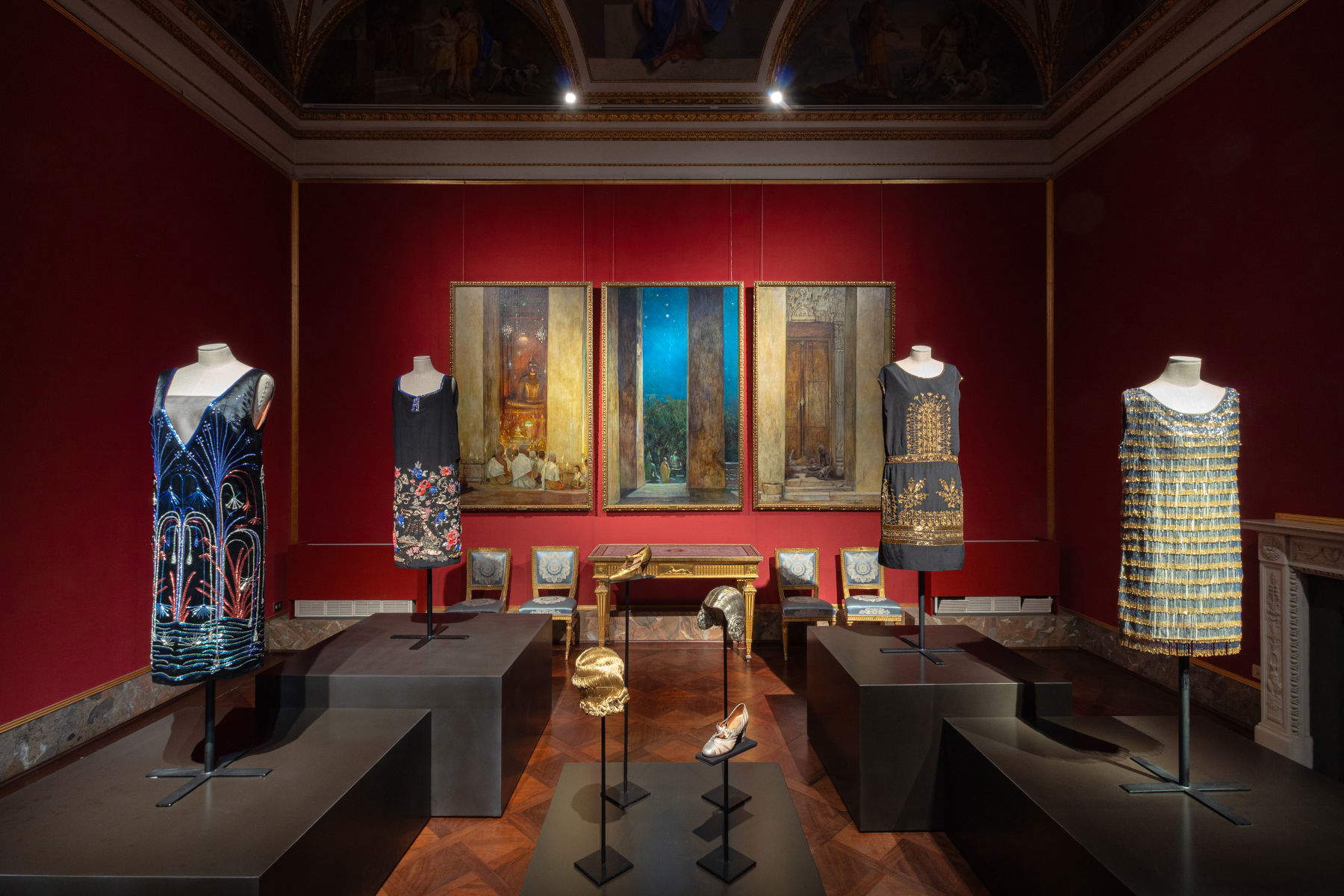
“In the twentieth century, fashion tells the story of women between freedom and elegance,” says Fashion and Costume Museum curator Vanessa Gavioli. “From the flappers of the 1920s with light dresses and exotic accents, we move on to the 1930s, with a more classic and traditional femininity. Chanel revolutionized the suit, later reworked by Galitzine and Schön. In the 1960s and 1970s, miniskirts, graphisms and subcultures explode, while the Space Age looks to the future and Capucci sculpts the dress. In the 1980s, Coveri enhances light and color with sequins.”
The current display, curated with philological attention, unfolds along a path that interweaves the main currents of 20th-century fashion with coeval artistic references, creating a visual dialogue between sartorial creations and works by great masters of Italian painting. These include Galileo Chini, Felice Casorati and Alberto Burri, whose works accompany and contextualize the narrative of the aesthetic and cultural changes of the last century.
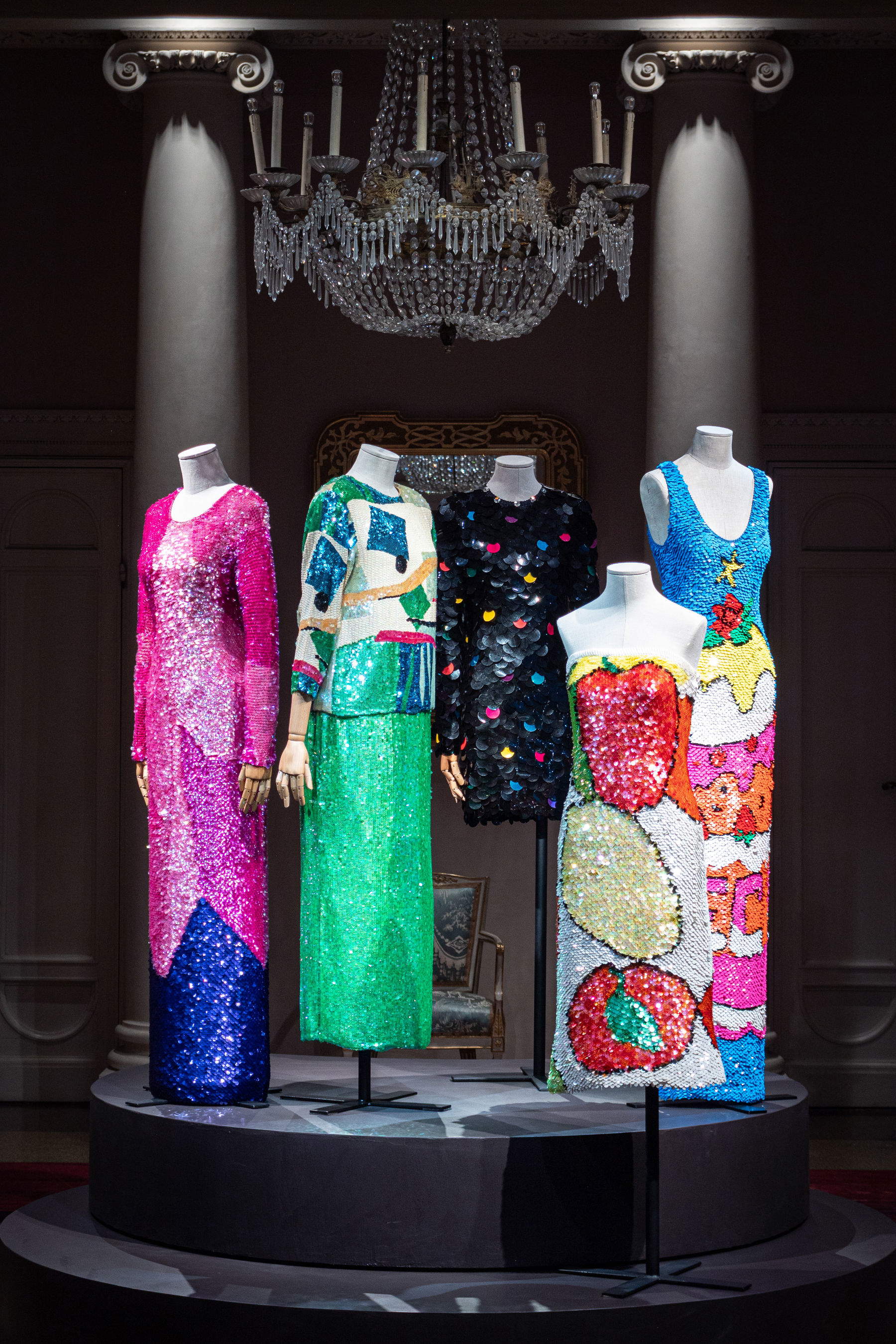
The first room is dedicated to Charleston fashion, named after the 1920s iconic dance of the same name. Here we explore the link between the artistic avant-garde, exoticism and the transformation of women’s role in society. An emblematic example is the dress worn by Galileo Chini’s wife at the premiere of Turandot at La Scala Theater in Milan in 1926. The garment, displayed next to the painter’s Triptych , transforms the space into a theatrical set inspired by the Orient, evoking the fascination with the cultures of China, Japan and India that permeated the aesthetics of flappers, the young women of the time determined to break with social conventions.
The tour continues with two rooms devoted to fashion between the wars. Here the visitor finds himself immersed in a sequence of clothes ranging from Déco sophistication to the influences of rationalism and 1930s cinema. In this context is Felice Casorati’s painting The Stranger, which visually dialogues with garments designed by Elsa Schiaparelli and Madeleine Vionnet. The juxtaposition emphasizes the affinities between the formal experiments of the artistic avant-garde and the sartorial innovations of those years.
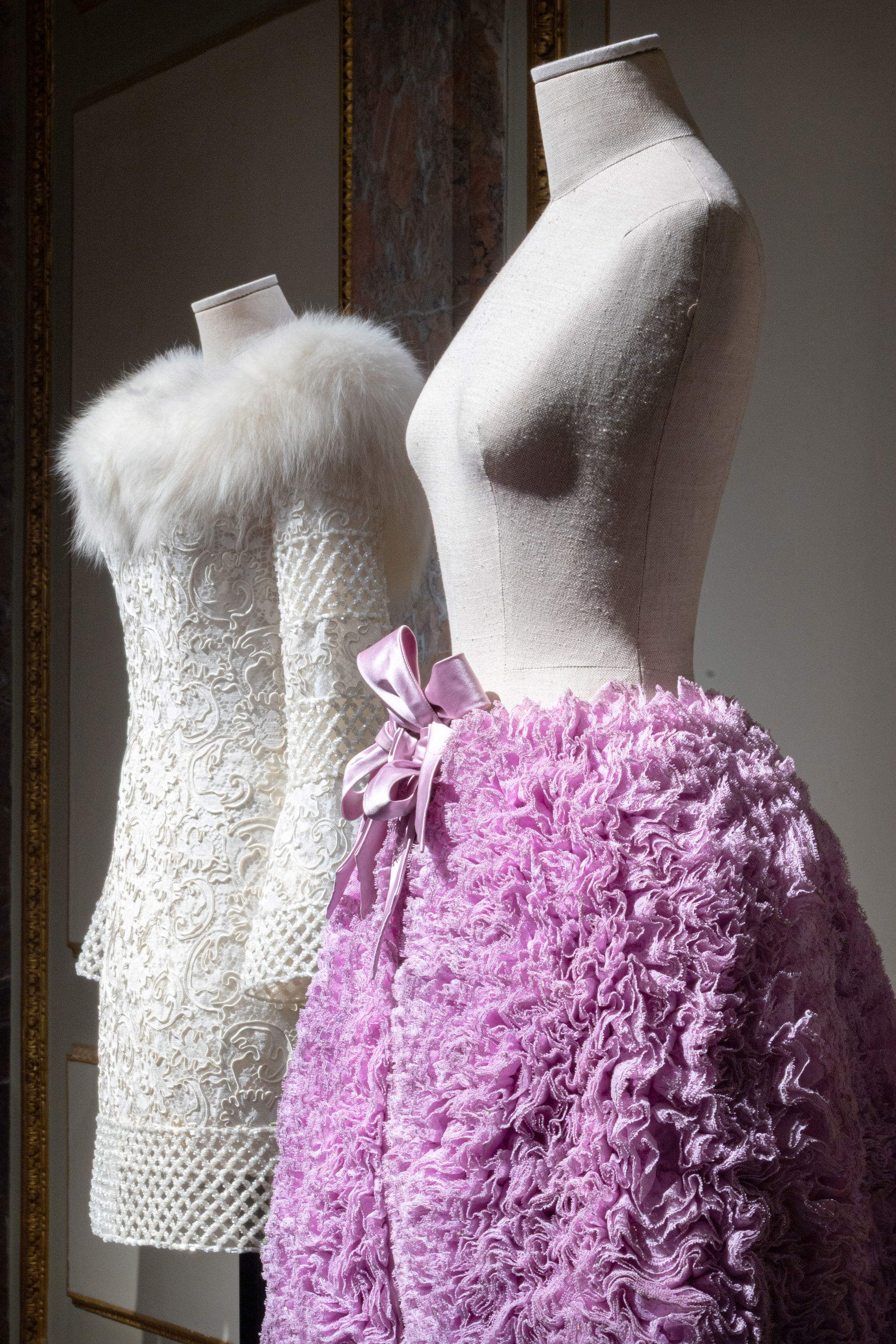
Another section is reserved for postwar fashion, a period marked by the rebirth of the haute couture system. On display is an extremely rare dress by the young Yves Saint Laurent, who was appointed creative director of the Maison Dior when he was only 21 years old, after the untimely death of Christian Dior in 1957. The room also includes three gowns that belonged to actress Ingrid Bergman, including a garment by Gattinoni, testifying to the understated and sophisticated elegance of the fashion of the period.
Three rooms are then devoted to the 1960s and 1970s, decades of profound cultural and social change. The selection documents the growing influence of youth culture, the rise of ready-to-wear and the redefinition of the female body through new clothing models. The itinerary culminates with a section on the Space Age Movement, a current inspired by space exploration and technological innovations that also influenced the language of fashion. The exhibition includes garments by designers such as André Courrèges, André Laug and Pierre Cardin, interpreters of a futuristic, geometric and minimalist aesthetic.
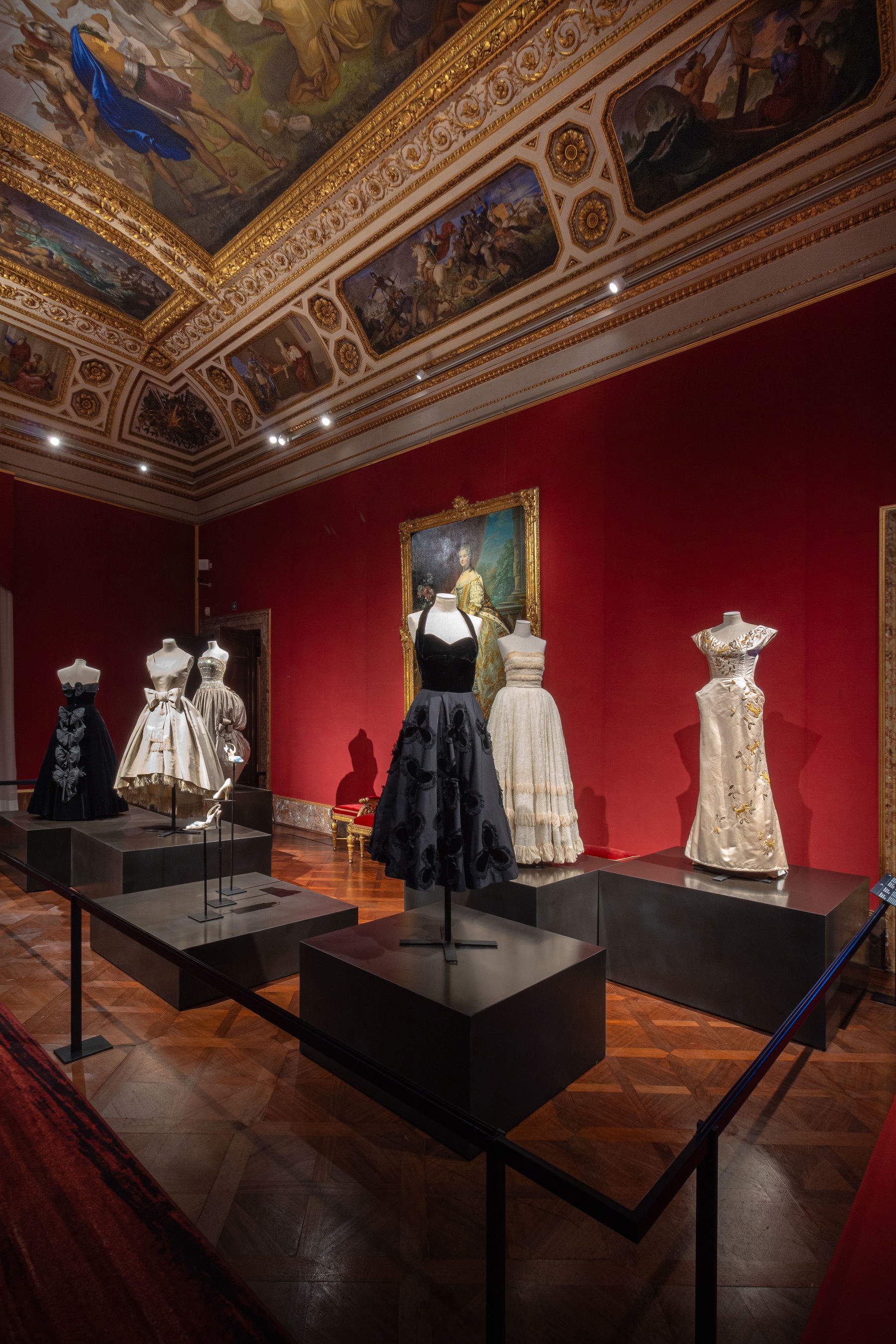
Ample space is reserved for Roberto Capucci, a central figure on the Italian scene for the originality and visionary power of his creations. In a context dominated by mass fashion and ephemeral trends, Capucci maintained a rigorous, almost architectural approach to the form of dress. His works, displayed in a dedicated room, express an idea of fashion as plastic art, capable of combining volume, structure and color in visually striking compositions.
The itinerary concludes with the 1980s, represented by the unmistakable style of Enrico Coveri. His creations, characterized by massive use of sequins, bright colors and provocative cuts, embody the eccentric and nonconformist spirit of the decade. Coveri transformed brilliance into a trademark, building an ironic yet sophisticated image of Italian fashion, which finds in this exhibition an effective moment of synthesis.
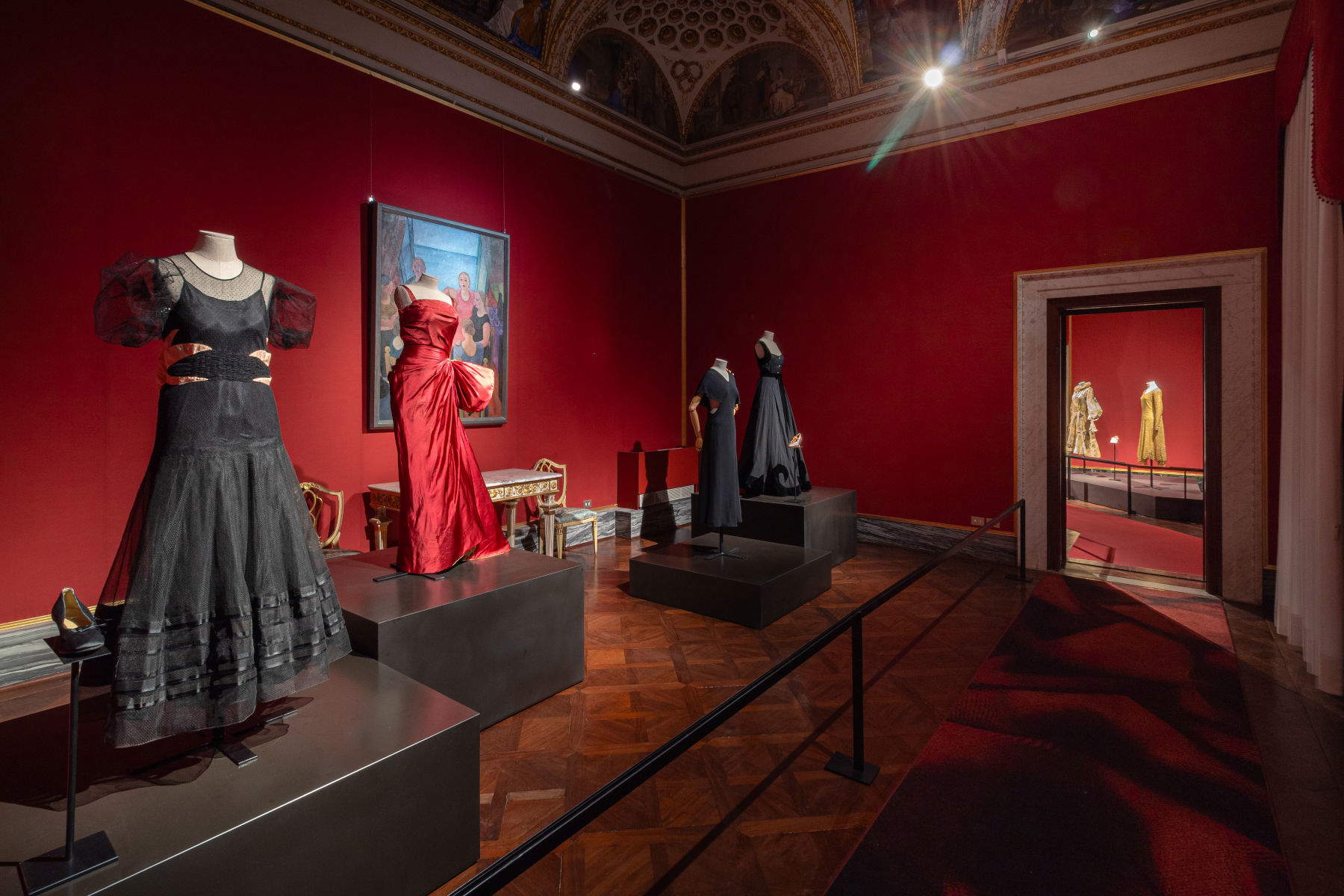
With the new selection, the Fashion Museum at Palazzo Pitti confirms its desire to offer a dynamic and accessible narrative of the history of costume. The annual rotations will allow the entire heritage held in the repositories to be enhanced over time, offering visitors an ever-renewed vision of the link between fashion, art and society. The initiative is also part of a museum renewal project, aimed at making the contents usable also to a non-specialist public, without, however, renouncing the scientific rigor that distinguishes the historical and conservation research of the Uffizi Galleries.
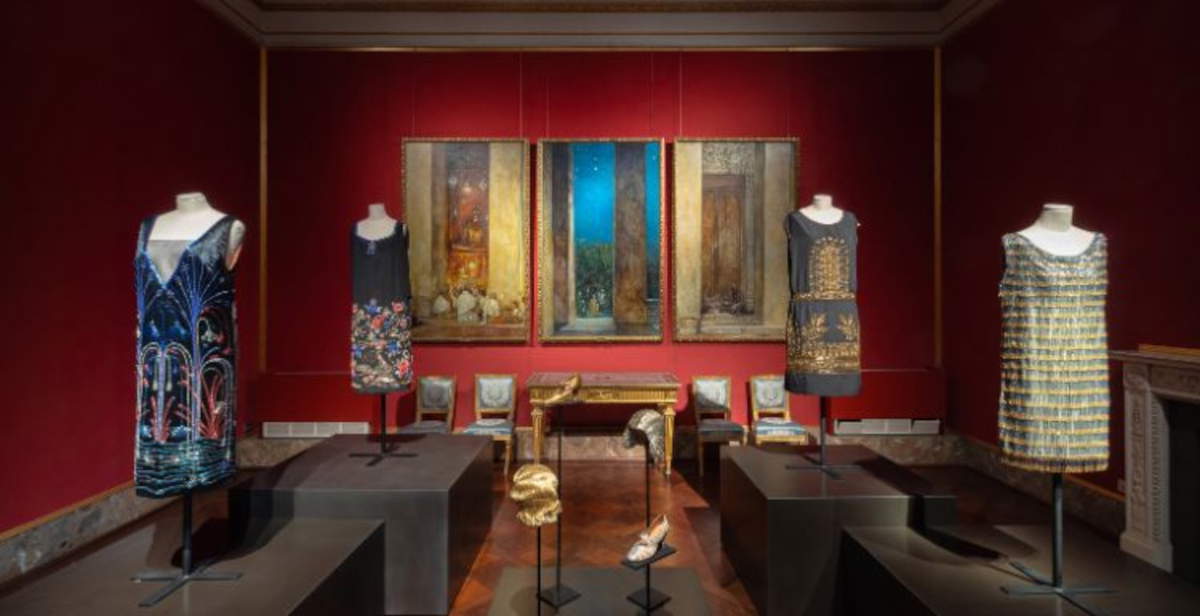 |
| The 20th century through 40 designer gowns: the new exhibit at the Fashion Museum in Palazzo Pitti |
Warning: the translation into English of the original Italian article was created using automatic tools. We undertake to review all articles, but we do not guarantee the total absence of inaccuracies in the translation due to the program. You can find the original by clicking on the ITA button. If you find any mistake,please contact us.